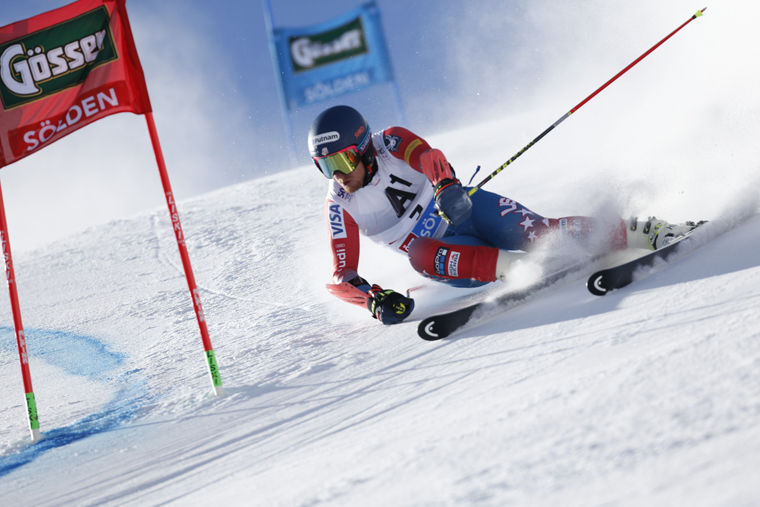Graham Bell on the curse of the ACL


The invention of plastic shell boots in the 1970s cured the classic early ski racer injury of a broken ankle, but only moved the problem further up the leg to the knee. The introduction in the 1990s of riser plates, which add leverage – as well as increased ski side-cuts, which add force – have only exacerbated the problem.
The weak point in a skier’s knee is the anterior cruciate ligament, which stops the tibia moving forward in relation to the femur. Scientists have been studying ways in which skiers tear it since the 1980s. Terms such as Phantom Foot Syndrome describe how the tail of the ski acts like a foot extending backwards from the heel. While Boot-Induced Anterior Drawer describes the force of the ski boot on the calf when landing backwards from a jump with nearly extended knees.
A recent study by the Oslo Sports Trauma Research Center found that ski racers damage their knees atypically to recreational skiers, and may not even fall after suffering an injury.
This season, in the Val d’Isère Première Neige World Cup, Thomas Fanara tore his ACL a few gates from home on the second run, and still managed to finish fourth in the competition. Thomas, like many of the ski racers who tore their ACLs last season (Aksel Lund Svindal, Ted Ligety and Anna Veith to name but a few), faces a six-month rehab period before setting foot on skis again.
Ted Ligety, who has suffered both of today’s typical injuries – ACL and lower back | head.com / Hans BezardWhen I tore my ACL racing a World Cup downhill in Panorama in 1985, there were a multitude of repair techniques: artificial implants like Gore-Tex, carbon fibre and knitted polyester (which I opted for), transplants from cadavers,
and the use of donor tissue from the patient’s own patella tendon. The latter method has stood the test of time, except that the hamstring tendon is now used, because messing with the patella tendon often caused additional problems.
There was one other technique that my brother Martin benefited from at 15 years old. It did not have a great success rate and the patient needed to be young, but Martin’s ACL was stitched back together by a surgeon in Innsbruck. A new technique developed in Glasgow does something similar, using a micro internal brace that allows the ACL to repair itself, and can reduce recovery times by 50%.
This season Aksel recovered from his ACL repair to place on the podium in the first three races in December, but his knee was still causing him pain. He had damaged the cartilage that coats the ends of the tibia and femur, and required microfracture of the damaged area, a technique developed by Dr Steadman in Vail.
In Wengen, Aksel admitted the pain was too great and pulled out of the race, resigning himself to missing yet another season and further surgery.
Of course, by far the best way to reduce the impact of ACL injuries would be to stop them from happening in the first place. A study in 2009 at Salzburg University found that the main causes of knee injury to ski racers were aggressive snow conditions, such as dry manmade snow, course setting and an aggressive equipment set-up.
In 2012 the International Ski Federation (FIS) introduced radical equipment rule changes, particularly to the side-cut of giant slalom skis. However this change is set to be reversed next season, as GS racers have started to suffer from lower back issues after five seasons of racing on the straighter, less responsive skis, which need much more force at the start of a turn.
Ted Ligety is a prime example. After recovering well from last season’s ACL injury, he has now been sidelined after a lower back operation.
Each season ski racers become physically stronger and the forces they exert in the turns become greater – and each season the people at FIS monitor and do their best to reduce the number of injuries. But the governing body of the sport must feel a little like King Canute trying to halt the tide.